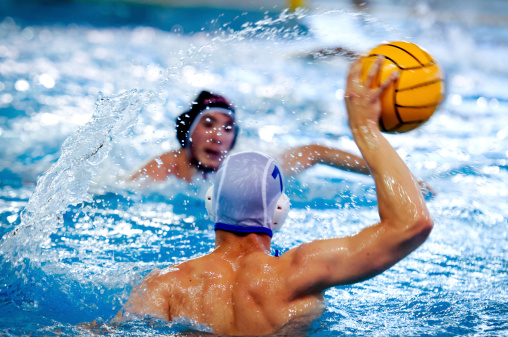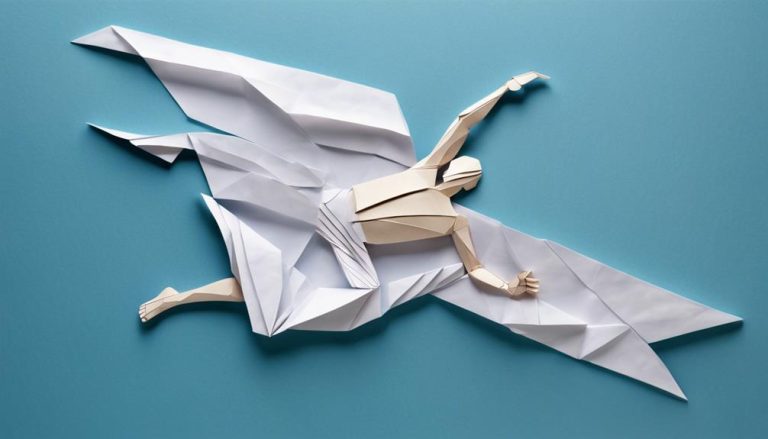General Rules of Freestyle Swimming
Looking to excel at freestyle swimming? Guarantee a smooth turn, push off the wall sharply, and time laps well. Kick robustly off the wall and perfect stroke efficiency for a seamless glide. Evaluate performance by monitoring stroke count. Enhance skills with precise swim drills targeting weaknesses. Develop a personalized racing strategy and be adaptable. To improve swimming, fix common errors like breathing technique, arm positioning, and leg kicks. Enhance mastery by implementing these techniques.
Proper Body Positioning
When freestyle swimming, maintaining proper body positioning is essential for efficiency and speed in the water. Starting with head alignment, make sure your head is in line with your spine, keeping it steady and looking down at the bottom of the pool. This helps reduce drag and maintains a straight body position.
Body roll plays an important role in freestyle swimming. Engage your core muscles to initiate a smooth body roll from side to side with each stroke. This movement allows for better reach and power in your arm strokes while reducing strain on your shoulders.
Incorporating hip rotation into your technique adds propulsion to your swim. Focus on rotating your hips along with your body roll, allowing your arms to catch more water with each stroke. This coordinated movement generates more power and momentum, propelling you forward efficiently.
Efficient Arm Stroke
To achieve an efficient arm stroke in freestyle swimming, focus on maintaining a strong and fluid motion throughout each stroke, maximizing propulsion and speed in the water. Start with proper arm entry, ensuring your hand enters the water fingertips first, followed by a quick rotation of your arm to catch the water effectively. This initial movement sets the stage for a powerful stroke. As you pull your arm back underwater, engage your core for stability, and focus on generating power through your entire arm motion. The key is to push the water behind you with force, propelling your body forward efficiently. Remember, the more water you can displace with each stroke, the more propulsion you will generate. Maintaining a steady rhythm and fluid movement will not only increase your speed but also conserve your energy for longer distances. Practice arm rotation and power generation to perfect your freestyle arm stroke for a smoother and faster swim.
Consistent Breathing Technique
When it comes to freestyle swimming, mastering a consistent breathing technique is crucial to enhancing your performance in the water. By establishing a steady breathing rhythm, you can guarantee a continuous flow of oxygen to your muscles, boosting endurance and efficiency. Additionally, practicing bilateral breathing offers the benefits of balance, symmetry, and reducing strain on one side of your body.
Breathing Rhythm Importance
Emphasizing the consistent breathing technique in freestyle swimming enhances your performance and efficiency in the water. By maintaining a steady breathing rhythm, you can improve endurance and swim more efficiently. Incorporating breathing exercises into your training routine can help you develop a strong connection between your strokes and breathing pattern. Consistent breathing not only guarantees a steady flow of oxygen to your muscles but also helps maintain balance and coordination in the water. Practice different breathing techniques to find what works best for you, whether it's every two or three strokes. Remember, mastering your breathing rhythm is crucial to unleashing your full potential in freestyle swimming, leading to improved overall performance and enjoyment in the water.
Bilateral Breathing Benefits
Discover the advantages of incorporating bilateral breathing into your freestyle swimming technique for improved consistency and efficiency in the water. By alternating sides for each breath, you enhance your breathing patterns and increase lung capacity. Bilateral balance is vital in maintaining a straighter swim path, reducing drag, and improving overall stroke symmetry. This technique also promotes better head alignment, keeping your body streamlined and reducing strain on your neck and shoulders. Consistent bilateral breathing helps you maintain a steady rhythm, leading to better endurance and performance in the long run. Practice this technique to reap the benefits of improved oxygen intake and enhanced stroke efficiency, allowing you to glide through the water with ease.
Rhythmic Kicking Patterns
Alright, now let's talk about the key points to focus on when it comes to mastering rhythmic kicking patterns in freestyle swimming. You'll want to pay close attention to your leg position, ensuring it's streamlined and propelling you forward efficiently. Mastering the flutter kick technique and coordinating your breathing will help you maintain a smooth and powerful stroke.
Proper Leg Position
To enhance your freestyle swimming technique, focus on maintaining proper leg position and executing rhythmic kicking patterns. When it comes to your legs in freestyle swimming, there are key elements to keep in mind:
- Leg strength and kicking power: Strengthen your legs to generate more power in each kick, propelling you forward efficiently.
- Streamline position: Keep your legs close together and fully extended to reduce drag and move through the water smoothly.
- Propulsion efficiency: Focus on kicking from your hips, not just your knees, to maximize the propulsion generated by each kick.
- Consistent kicking rhythm: Maintain a steady and rhythmic kicking pattern to help maintain your momentum and overall speed in the water.
- Balance and coordination: Make sure that your kicks are synchronized with your arm strokes for the most efficient and speed.
Flutter Kick Technique
When mastering the flutter kick technique in freestyle swimming, focus on maintaining a consistent and rhythmic kicking pattern to propel yourself efficiently through the water. Proper ankle flexibility is essential to execute a powerful flutter kick. Make sure your ankles are relaxed, allowing your feet to flex slightly with each kick. Engage your core muscles to stabilize your body and enhance propulsion. Hip rotation plays an important role in the flutter kick, promoting a streamlined body position and reducing drag. Coordinate your timing by syncing your kicks with your arm strokes to optimize speed and efficiency. Practice regularly to improve your flutter kick technique, integrating ankle flexibility, hip rotation, core strength, and timing coordination for a more effective freestyle swim.
Breathing Coordination
Now, let's focus on mastering the rhythmic kicking patterns in freestyle swimming by coordinating your breathing with your kicks for peak efficiency and performance in the water. To improve your breathing coordination, consider the following tips:
- Practice Breathing Exercises: Incorporate breathing exercises into your training routine to enhance your lung capacity and control your breathing rhythm.
- Sync Breathing with Kicks: Coordinate your breathing with your flutter kicks to guarantee a smooth and efficient stroke cycle.
- Focus on Oxygen Intake: Pay attention to your oxygen intake by taking deep breaths before turning your head to breathe during each stroke.
- Maintain a Consistent Pace: Establish a steady rhythm by synchronizing your kicks and breathing pattern throughout your swim.
- Stay Relaxed: Relax your upper body and neck to facilitate easy breathing and optimize your swimming performance.
Mastering the Flip Turn
Ready to advance your freestyle swimming skills? Mastering the flip turn is a pivotal technique that can enhance your efficiency in the pool. When executing a flip turn, timing and power are essential for maintaining speed and fluidity in your swim. To help you perfect this skill, here are some tips to contemplate:
| Flip Turn Timing | Flip Turn Power |
|---|---|
| Focus on initiating the flip as your hand makes contact with the wall. | Utilize your core muscles to rotate your body quickly. |
| Tuck your chin towards your chest to facilitate the somersault. | Propel off forcefully with your feet to gain momentum. |
| Aim to complete the turn in one smooth motion. | Direct your energy into a streamlined push off the wall. |
| Practice your timing to smoothly switch into the next lap. | Sustain a strong kick to propel yourself off the wall efficiently. |
Understanding Stroke Count
To enhance your freestyle swimming technique, understanding your stroke count is crucial for optimizing efficiency and speed in the water. Keeping track of the number of strokes you take per length can provide valuable insights into your swimming performance. Here are some key points to ponder:
- Stroke efficiency: Monitoring your stroke count helps you assess how effectively you are moving through the water. By reducing unnecessary strokes, you can improve your overall technique and glide more smoothly.
- Breathing coordination: Paying attention to your stroke count can also help you coordinate your breathing better. Maintaining a consistent stroke count often leads to improved breathing patterns, reducing the risk of fatigue and ensuring you receive sufficient oxygen.
- Enhancing speed: With a lower stroke count, you can increase your speed without necessarily exerting more energy. Efficient strokes mean you cover more distance with each stroke, propelling you forward faster.
- Reducing fatigue: By optimizing your stroke count, you can decrease the strain on your muscles and reduce the likelihood of getting fatigued quickly. Conserving energy through efficient strokes allows you to swim longer distances comfortably.
Understanding your stroke count is a simple yet powerful technique that can boost your swimming performance significantly.
Utilizing Swim Drills
When incorporating swim drills into your routine, focus on precision and technique to enhance your freestyle swimming skills efficiently. Swim drills are essential for improving your swim technique and working on speed improvement. By incorporating drills that focus on specific aspects of your stroke, such as body positioning, arm technique, and kick strength, you can target areas that need improvement and enhance your overall performance in the water.
To work on your swim technique, consider drills like catch-up drill, where you concentrate on each arm stroke to guarantee proper technique and alignment. Another beneficial drill is fingertip drag, which helps improve your high elbow catch and pull phase. By honing in on these technical aspects through drills, you can refine your freestyle technique and become a more efficient swimmer.
Additionally, drills like kicking on your side or using fins can aid in speed improvement by targeting leg strength and kick technique. Remember, consistency is key when incorporating swim drills into your routine to see continuous progress in your freestyle swimming skills.
Racing Strategy Tips
Enhance your competitive edge by strategizing effectively during freestyle races. To excel in your races, consider the following tips:
- Pacing Strategy: Develop a pacing strategy that suits your strengths and endurance levels. Start strong but make sure you have enough energy for the final push.
- Mental Preparation: Visualize your race beforehand, imagining yourself gliding effortlessly through the water. Stay focused and confident throughout the race.
- Tactical Maneuvers: Be prepared to adjust your strategy based on your competitors. Anticipate their moves and make tactical decisions to gain an advantage.
- Sprint Intervals: Incorporate sprint intervals into your training routine to improve your speed and explosiveness when needed during the race.
- Stay Agile: Be ready to adapt to changing race conditions. Stay agile and be willing to make quick decisions to maintain your position or gain ground.
Avoiding Common Mistakes
In your freestyle races, steering clear of common mistakes can greatly impact your performance and overall experience. One prevalent error is improper breathing technique, leading to fatigue and reduced speed. To correct this, focus on exhaling underwater and taking quick, efficient breaths to the side. Another mistake is crossing over the centerline with your arms, causing resistance and slowing you down. Work on keeping your arms parallel to each other and pulling straight back. Additionally, kicking too wide or with a bent knee can waste energy and decrease propulsion. Incorporate freestyle drills like kicking on your side and using a kickboard to improve your technique. Finally, a common error is overreaching during the stroke, which can lead to shoulder strain and decreased efficiency. Practice proper arm extension and rotation to optimize your stroke length. By addressing these common mistakes and implementing correction methods through freestyle drills and improvement techniques, you can enhance your performance in the water.
Frequently Asked Questions
How Can I Improve My Endurance for Freestyle Swimming?
To boost your freestyle endurance, focus on mastering breathing techniques for efficiency. Incorporate training drills to build stamina. Fuel your body with proper nutrition and prioritize recovery strategies for peak performance and progress.
Are There Any Specific Stretches or Warm-Up Exercises I Should Do Before Swimming Freestyle?
Before diving in, focus on shoulder mobility with dynamic warm-ups. Strengthen core stability through a stretching routine. These prep exercises can enhance your freestyle swim, boosting performance and reducing the risk of injury.
What Type of Swim Gear Is Recommended for Freestyle Swimming?
For freestyle swimming, grab a swim cap to keep your hair in check and goggles for clear vision underwater. Paddles can help build strength, and fins provide extra propulsion. These gear essentials can enhance your swimming experience.
How Often Should I Practice Freestyle Swimming to See Improvement?
To see improvement in your freestyle swimming, aim to practice with technique drills and focus on breath control. Consistency is key, so try incorporating interval training sessions into your routine for best progress.
Can Freestyle Swimming Help With Weight Loss and Overall Fitness?
Sure, freestyle swimming can be a fantastic way to aid weight loss and boost overall fitness. Combine it with proper nutrition tips and a consistent training schedule to maximize results and achieve your health goals.






